‘Bøyum’s method’ is a term that is known throughout the world of medicine. FFI researcher Arne Bøyum’s discovery revolutionised the study of blood cells. This is how he became Norway’s most cited scientist of all time.
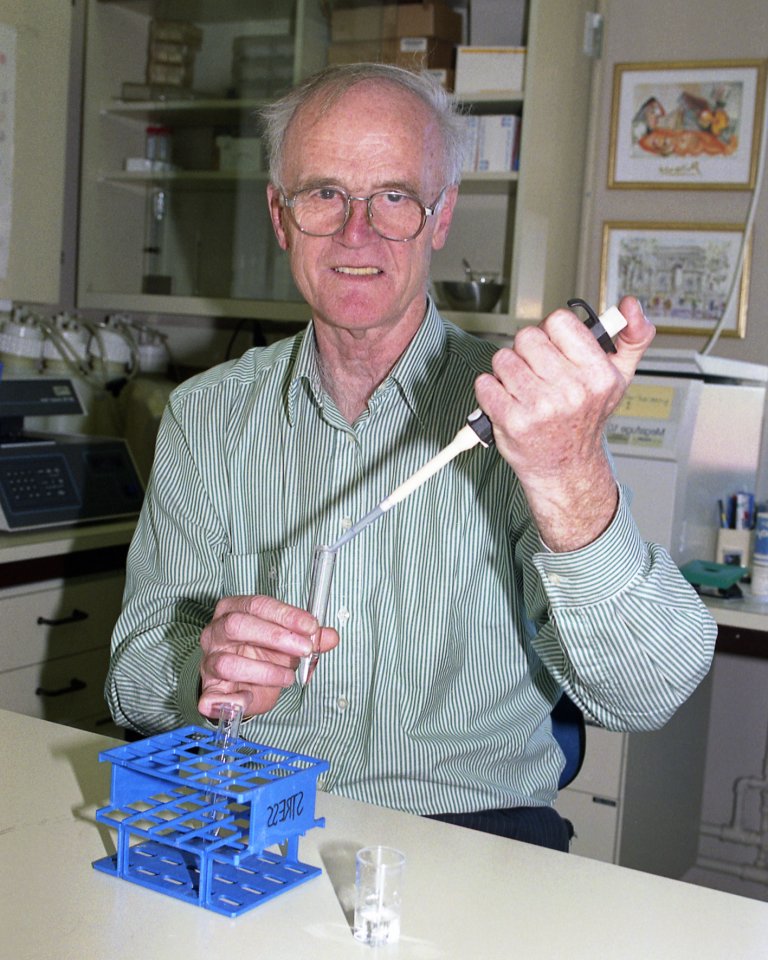
“He must be very rich”.
The words were uttered spontaneously.
Erling Christen Seeberg was attending an international conference. The award-winning cancer expert and FFI researcher had just told a colleague that he worked in the same laboratory as Arne Bøyum.
Between colleagues, the term ‘the Böyum technique’ could be compared to saying ‘the theory of relativity’. Everyone knew what it referred to.
Seeberg’s colleague at the conference was starstruck.
Who was Arne Bøyum and what kinds of research was he engaged in at the Norwegian Defence Research Establishment?
ABC at Kjeller
In the post-war years, a competent research community on ABC warfare had been established at FFI’s Kjeller premises. ABC stands for ‘atomic, biological, chemical’, which involves nuclear, biological and chemical weapons.
Ever since the first atomic bombs were detonated towards the end of the second world war, researchers have been studying the serious medical consequences of nuclear weapons.
The community at Kjeller was also very concerned with this. Radiation was a prioritised field.
The sensitive bone marrow
Nothing in the body is more sensitive to radiation than the bone marrow. This is where our blood comes from.
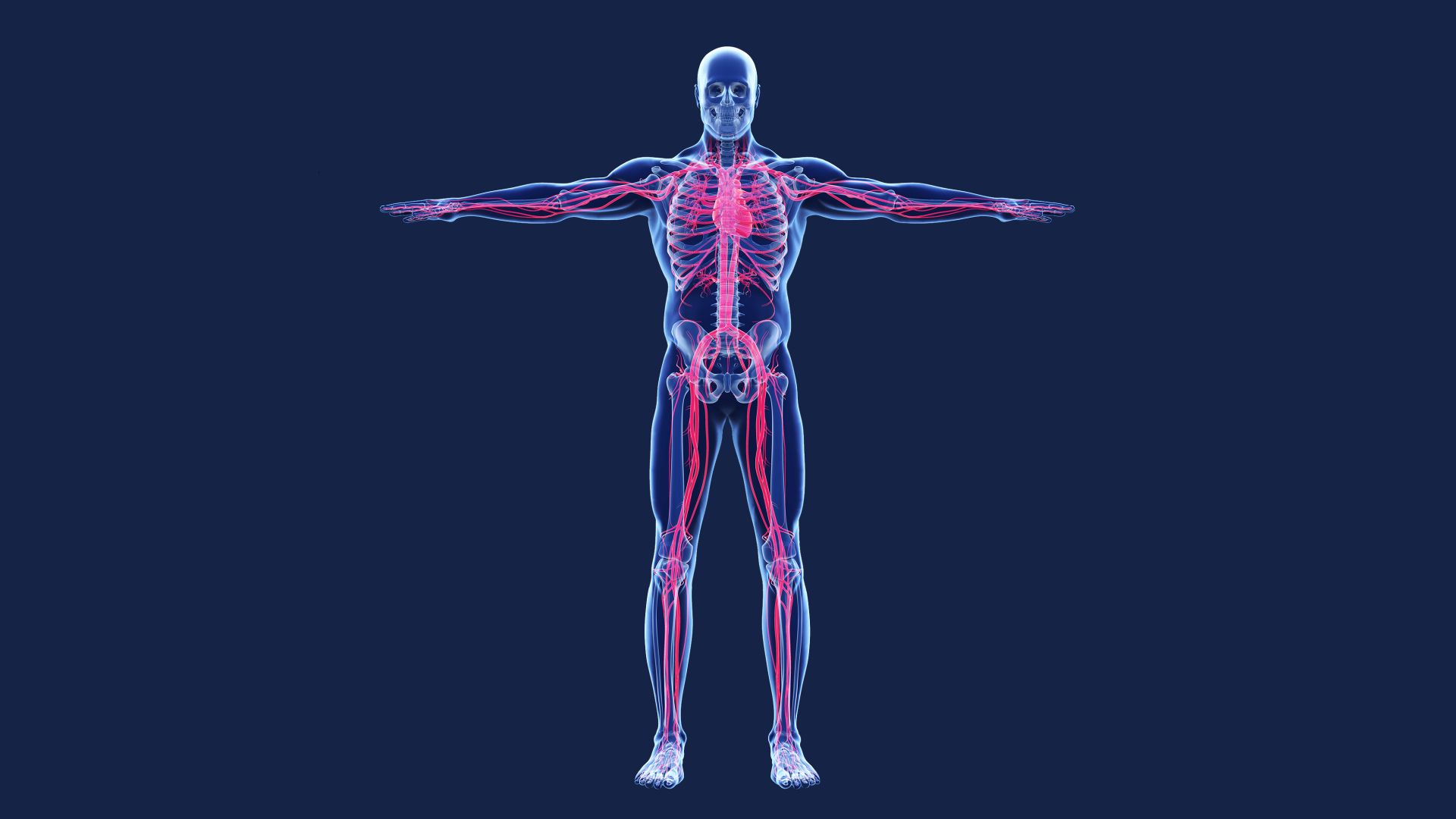
In an adult human, more than five litres of blood is circulating.
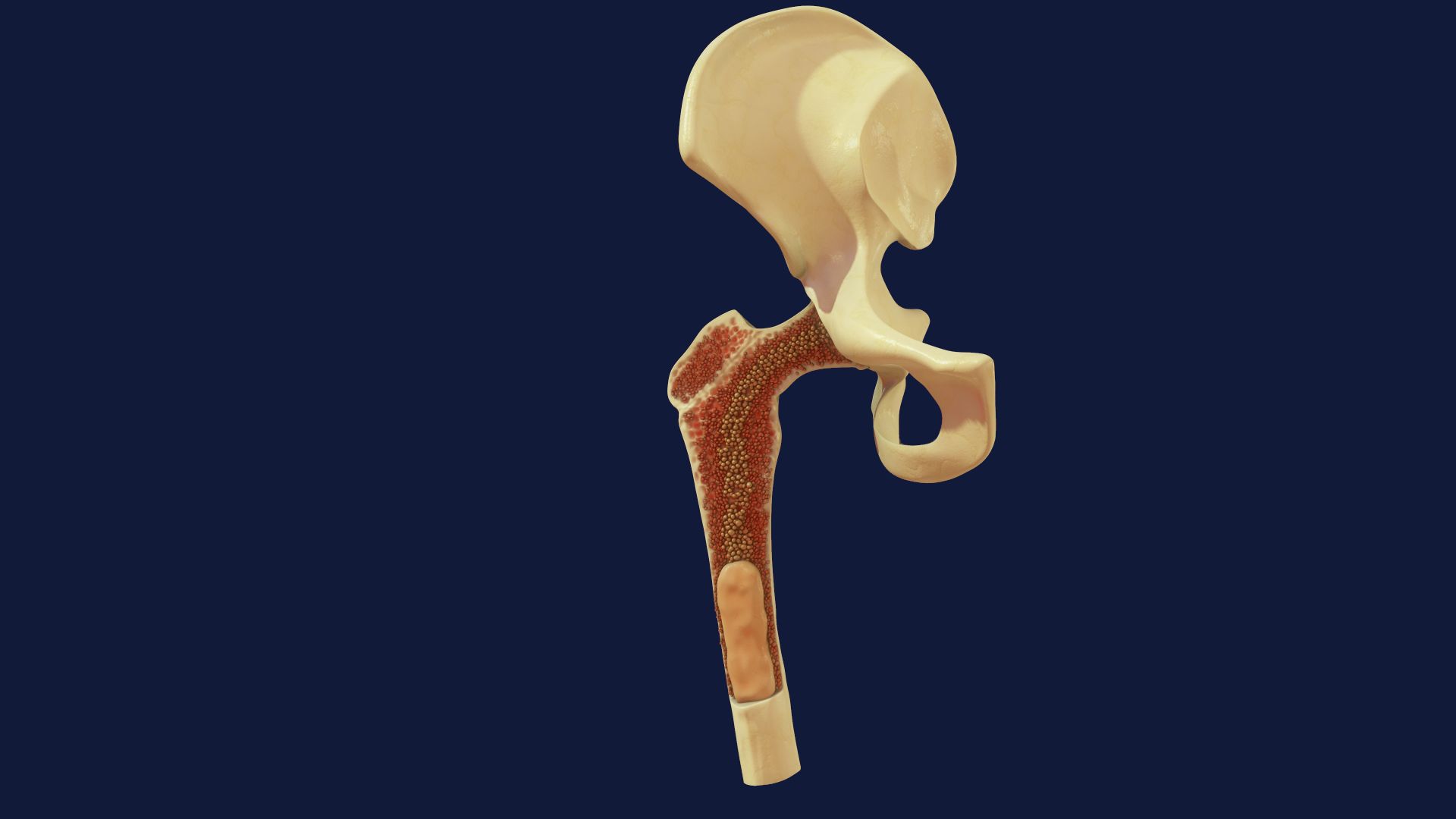
The bone marrow is the body’s blood factory. It can produce a large number of blood cells in a short period of time. It is a separate organ but is distinct from e.g., the heart and liver in that it is dispersed throughout the skeleton. The bone marrow is the red material that exists in the knuckles, spine and pelvis.
The bone marrow is an exciting organ for medical research. At the same time, the body’s blood factory is the organ that is the most vulnerable to radiation and some toxins.
This is how Bøyum and his work at FFI enters the story. How can harm to bone marrow be repaired?
In principle, one must have control of the blood cells.
Bøyum’s method is, simply put, a technique to separate blood cells, based on the fact that the various cell types have different individual weights.
How to repair radiation injury
Bøyum’s work on repairing the blood cells began in 1961. The starting point was to develop a method for separating bone marrow cells. The cells were to be used experimentally in bone marrow transplants. This way, medical science would have a basis for repairing radiation injury following a nuclear attack.
Bone marrow is sensitive to radiation. If the explosive power of an atomic bomb fails to instantly kill a person, bone marrow failure is one of the most important causes of death.
Radiation results in the cells dying or ceasing to develop. Strong radioactivity kills the stem cells, which are crucial for the renewal of blood cells. Anaemia, haemorrhaging and infections are results thereof.
Signs of illness caused by bone marrow failure are nausea, vomiting and diarrhoea. The patient may also experience symptoms similar to seasickness. These will typically subside. A few days without symptoms follow. Then the consequences of loss of blood cells become clear. Bloody diarrhoea and fluid imbalance. The haemorrhaging can now affect all of the body’s organs. On top of that; infections. Death will occur within a few weeks.
Could it be possible to repair the harm caused by radiation before this becomes a fact? One of the answers might be to replace the affected blood cells with healthy blood cells. By how?
Bøyum’s method is about the path to achieving this. He found a standard for isolating various human blood cells without harming them and thereby making them available. This was a recipe that haematology and radiation researchers had been seeking for years. Thus, it was a Norwegian who first accomplished it.
Only for the truly gifted
In his youth, Arne Bøyum had never imagined such a success or that research would become his walk of life.
He was supposed to become a physician. Arne Bøyum was aiming to become a specialist in internal medicine. Becoming a researcher? That was a job for the truly gifted, he thought.
Fate would have it that the young physician was offered the opportunity to work at a clinical laboratory at Oslo University Hospital, Rikshospitalet.
The stay was to last six weeks. It was here that Bøyum discovered that he actually enjoyed looking at blood cells through a microscope. Six weeks quickly became a year. And more. He had found his calling.
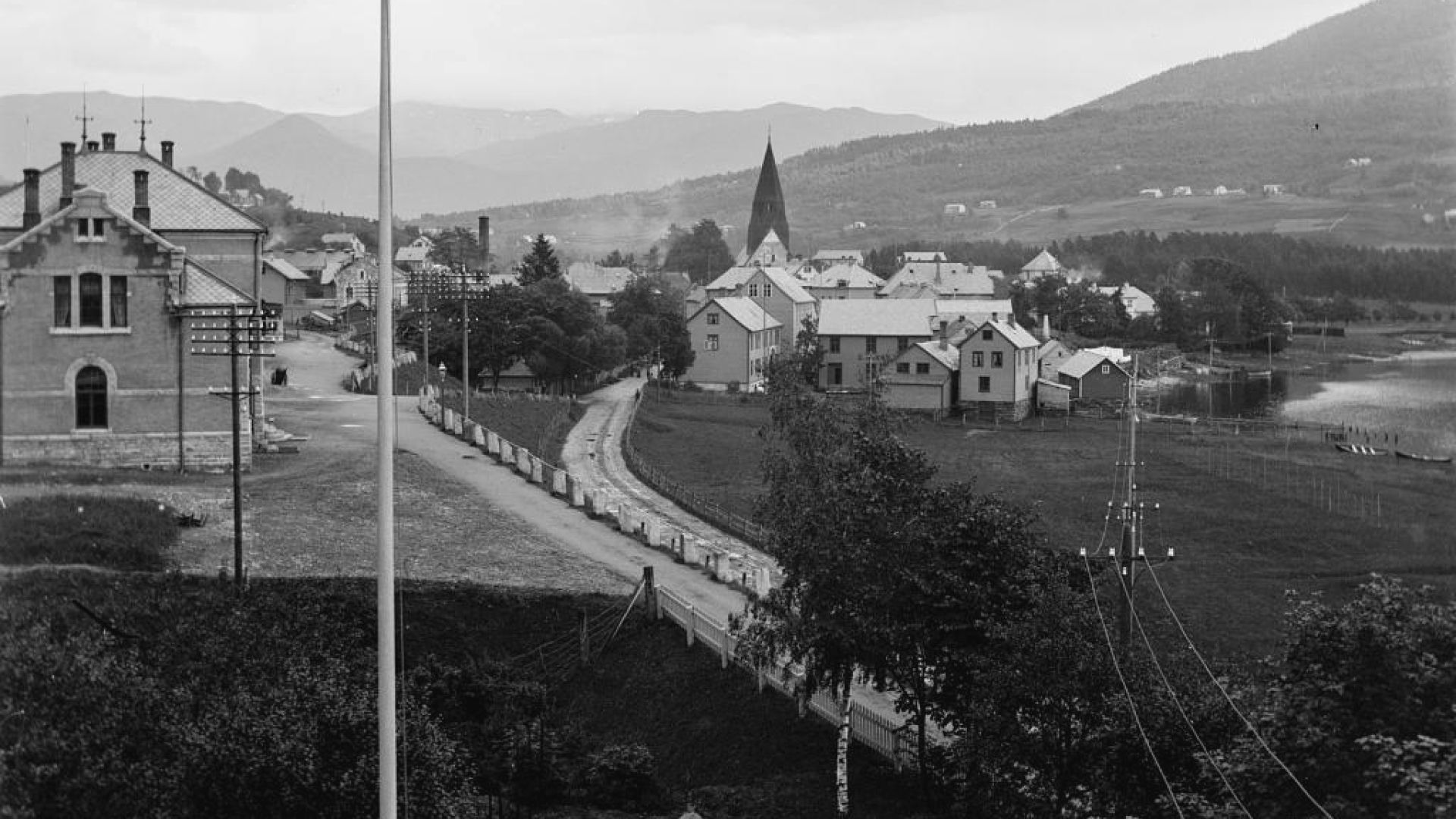
From Voss to Rikshospitalet
Arne was born in Voss in 1928. He was the second youngest of six siblings.

His father became a teacher at Firda Gymnasium in Sandane in Sogn og Fjordane. The family moved there and this is where Arne grew up.
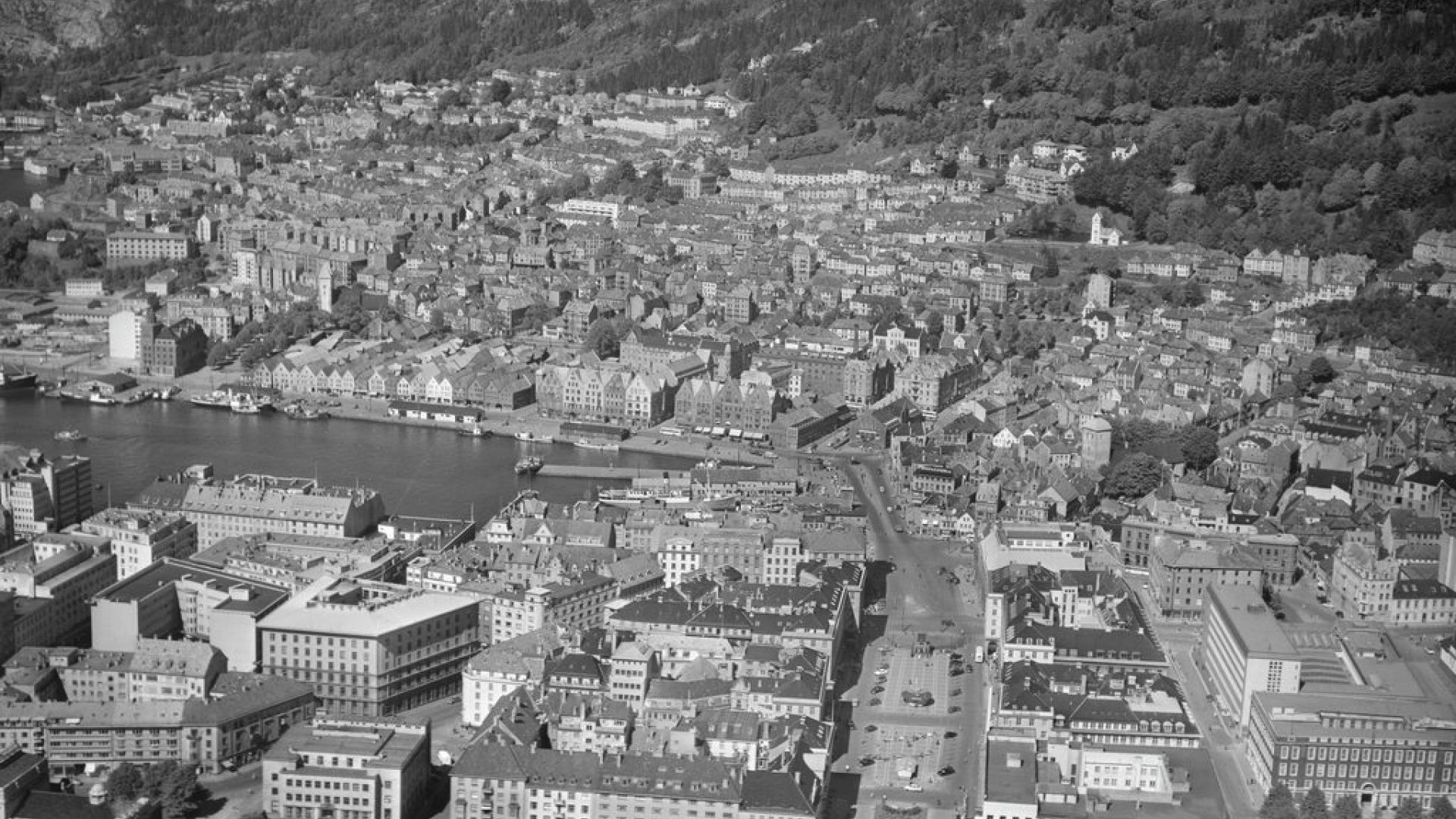
He studied medicine in one of the first groups at the faculty in Bergen. Following exams in 1953, there was medical residency and military services, a temporary appointment at the hospital in Odda and medical practice in Voss.
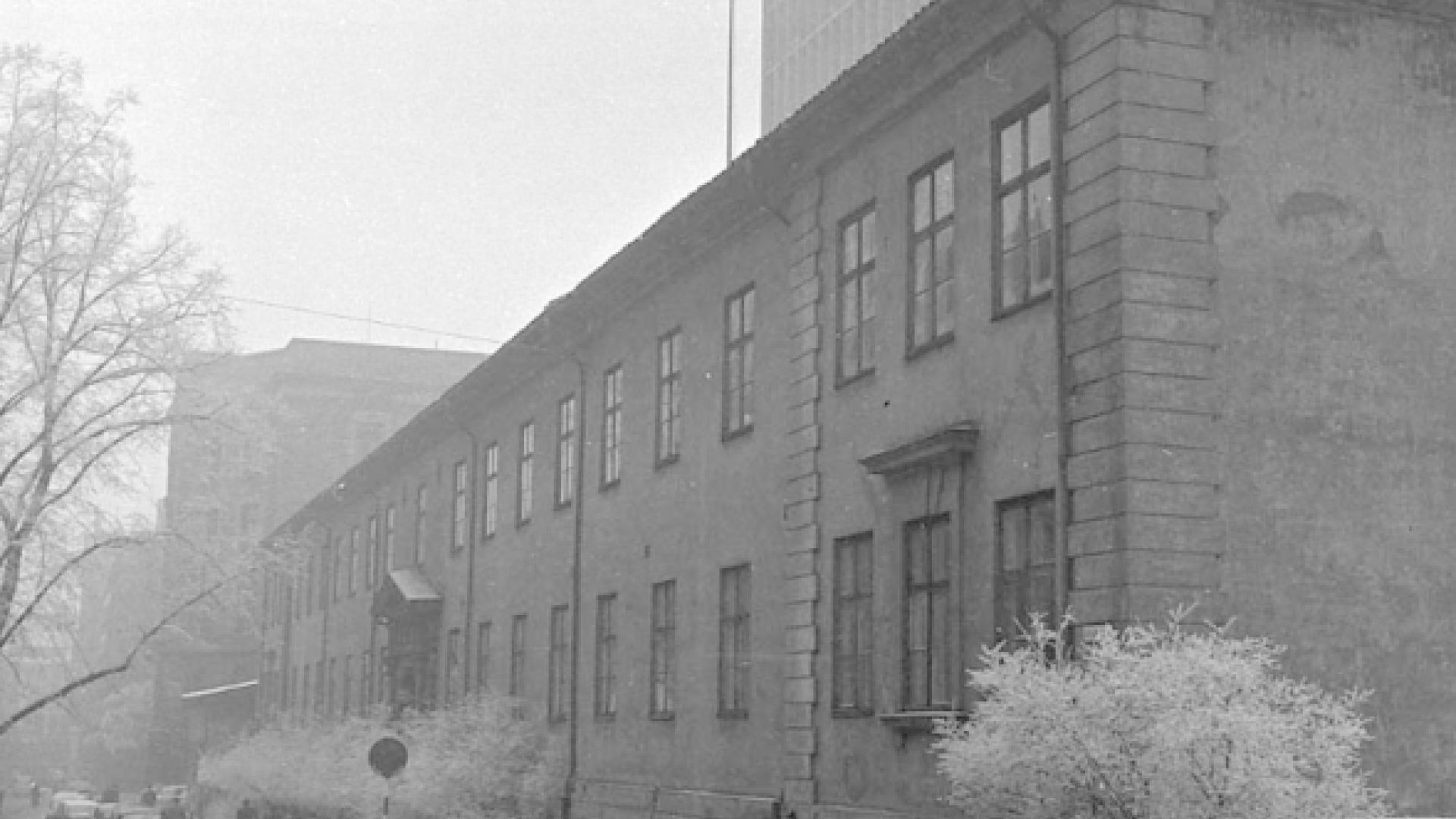
Then came the offer to return to the capital. In 1959, he was hired by the Department of Internal Medicine at Rikshospitalet.
There, he encountered a world-renowned community. This was because of the work of Professor Paul A. Owren (1905–90). Owren had identified important factors and diseases related to coagulation. He worked closely with Peter F. Hjort (1924-2011), who, at the time, was one of the world’s leading haematologists. Haematology is the study of diseases related to blood.
And that was it: Research it was.
Here, he implemented an investigation procedure that formed the basis for an important diagnostic test for the autoimmune disease lupus.
Perhaps there existed an even more exciting environment for the now 33-year-old Bøyum? He accepted an offer from another research group.
Bøyum’s first task at FFI was to prepare a technique for bone marrow transplants. This was in 1961, in the middle of perhaps the coldest part of the Cold War between the Soviet Union and the United States.
Nuclear war not beyond the realm of possibility. The atmospheric nuclear testing, among other places in the Pacific Ocean and above Novaya Zemlya, was a health threat. Serious accidents had occurred related to increasing use of nuclear reactors involving the sometimes-unreliable technology at the time.
The community at Kjeller realised that such transplants would be to no avail in a large-scale accident or war situations. It would be much too difficult to transplant bone marrow.
A question of weight
Bøyum’s major discovery was about to occur.
In order to conduct research on the formation of blood cells and bone marrow, one has to distinguish between the various types of cells, individually, without destroying them.
A starting point was that blood cells have different weights. Bøyum thought these individual weights could be exploited, perhaps with the aid of ordinary test tubes and a centrifuge. The principle of basing the work on weight was simple but it took years to develop a functioning technique.
He saw that saline solutions with different layers would entail that each cell found its place according to its weight. Unfortunately, the same saline could easily destroy the cells. Thus, the problem remained. Over two years and countless hours involving different solutions and hours of looking into the microscope, Bøyum was unable to find a good enough method for extracting the cell types.
The crucial centrifuge breakthrough
Bøyum had a separate centrifuge built in order to separate the blood cells. At the same time, a new Norwegian industrial product had been created.
Nycomed had developed a radiocontrast agent called metrizoat, marketed as Isopaque. It possessed the properties Bøyum had been looking for. As opposed to saline solutions, the concentration could be varied without destroying the blood cells. They could be separated and be re-injected into a patient. It was easy to separate white blood cells but more complicated with bone marrow cells.
The choice of Isopaque is an example of how Arne Bøyum chose his own path. A close colleague of his, Haakon Breien Benestad, still wonders how he came up with using a radiocontrast agents in his research:
“We never asked him, so the answer is unknown”.
The contrast agent also contains a type of carbohydrate. It made it easier to adjust the variables that Bøyum and his team were researching. He chose to go from bone marrow to using blood directly in the cleaning process. The blood they were researching came from employees at the lab, from soldiers who were given some welcome kroner for donating blood and, later, from blood banks.
Breakthrough while on break
The breakthrough occurred on the day Bøyum had prepared the solution while a colleague was using the centrifuge. Bøyum had been waiting for a few minutes for it to become available. This is how he discovered that the red blood cells were in the process of clotting and falling to the bottom. An important piece was suddenly in place. In parenthesis: The colleague who borrowed the centrifuge believed he should have been credited for the discovery.
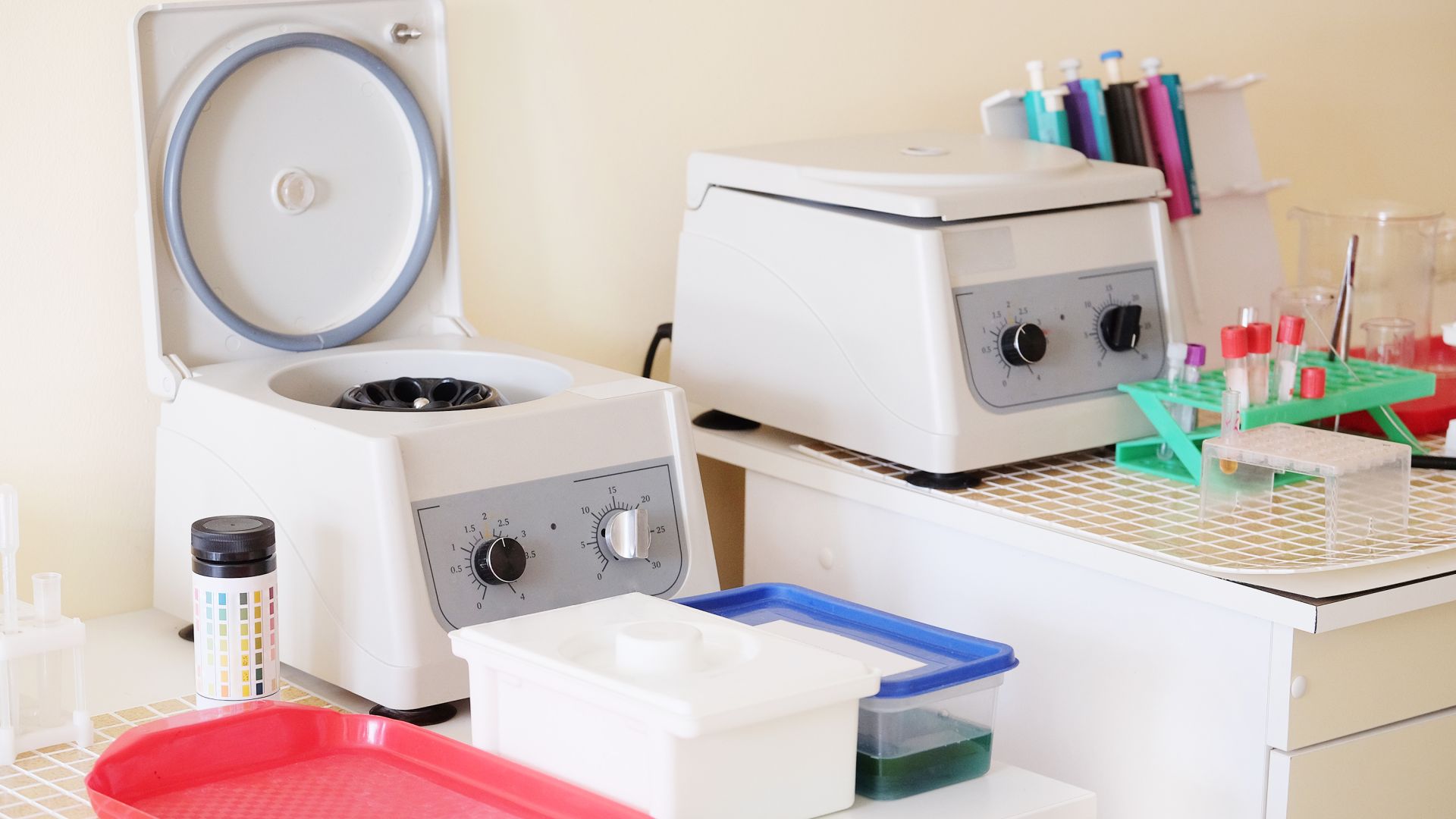
Centrifuges have been a permanent fixture in medical laboratories but are just one of many tools needed to sort blood cells.
A laboratory centrifuge can separate liquids and gasses. The material is spun around at a high speed. Thereby, the centrifugal force makes the heavier materials separate from the lighter materials.
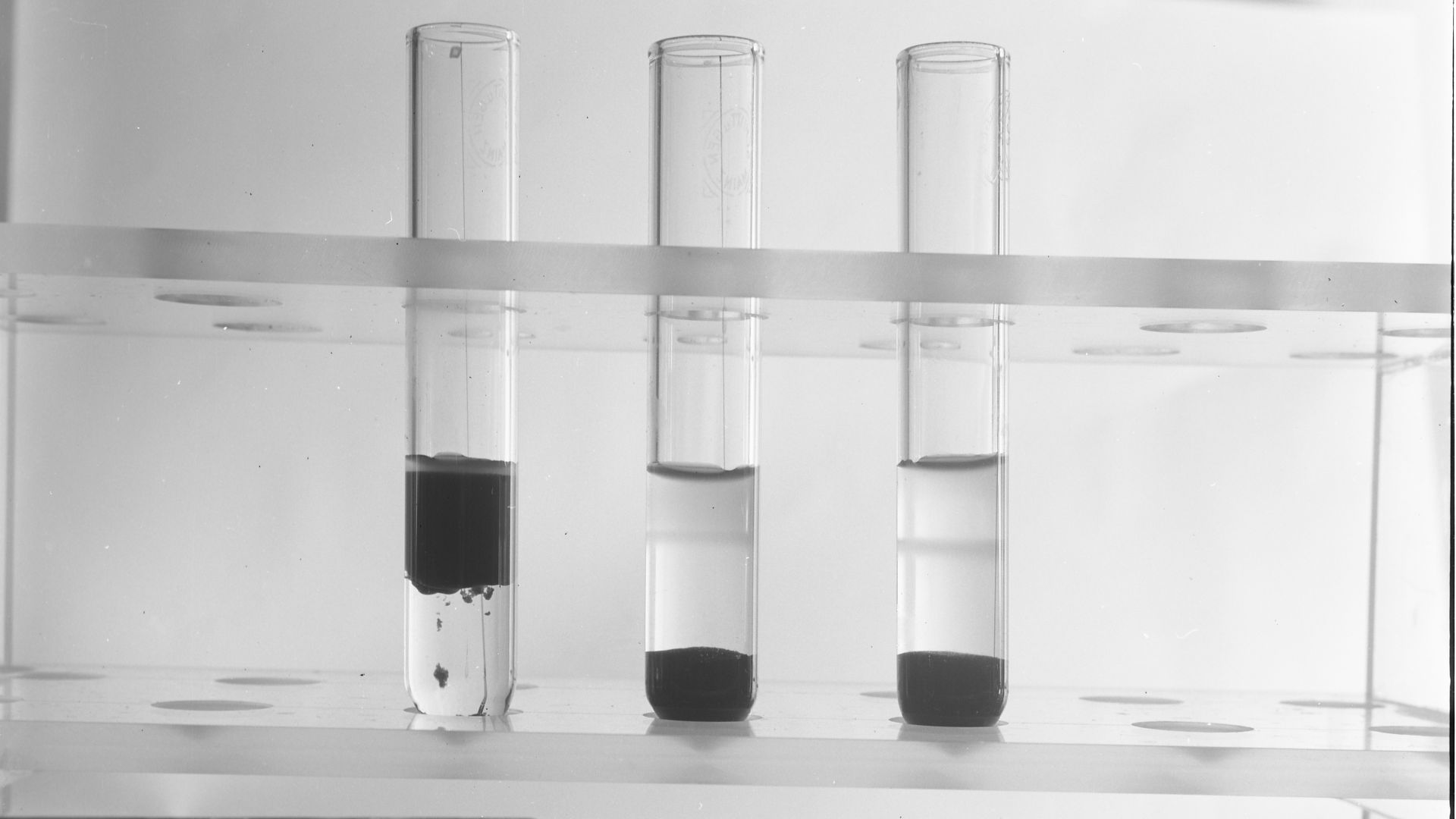
Red and white blood cells have different weights and are separated according to the centrifugal action.
With this as a new and major step forward, Bøyum continued this work for more than three years. He spend yet another year on perfecting the method.
Bøyum stated that it was crucial to find the right composition for the medium in which the blood was to be separated, the right density and temperature, how the various layers in the liquid moved and the concentration of substances. There were long days of careful work. Finally, he had a thoroughly tested result.
An international success
In 1968, the Scandinavian Journal of Clinical and Laboratory Investigation published Arne Bøyum’s article on the separation of blood cells.
It became an international sensation. The world had received a new, superior technique for blood separation. The research community had finally been given a series of simple methods that benefitted all blood research. Indeed, its benefits extended far beyond radiation injuries.
Bøyum’s method was suitable for a number of medical research fields. Among other things, it contributed to advancements in the identification of human factors for growth. The understanding of the immune system’s role during the development of HIV/AIDS and cancer were given a boost.
My methods are actually quite simple. All I have found out during these six years can be summarised on half a page.
Numerous scientific articles could now be based on ‘Bøyum’. He became renowned. The UN specialised agency the World Health Organization (WHO) decided that his methods were to become the standard for all such studies. By the time he had turned 70, he had been mentioned tens of thousands of times in articles by other researchers.
In a list containing all articles cited more than 10,000 times between 1981-1995, Arne Bøyum’s name was high on the list, with a total number of citations of approximately 24,000. He remains the most cited Norwegian researcher of all time.
“My methods are actual quite simple”, Bøyum once said in a newspaper interview. He also stated that “All I have found out during these six years can be summarised on half a page”.
Perhaps that was the stroke of genius.
Always just as humble
Despite all the praise, he always remained just as humble.
He never stopped researching. Arne Bøyum became a key blood and stem cell researcher with a high level of international recognition, along with his humble research group at Dumpa. When he retired from FFI, he initially worked for a few years at the laboratory of Hafslund-Nycomed. Later, he moved to the Institute of Basic Medical Sciences at the University of Oslo, Gaustad.
At Gaustad, as at FFI, Arne Bøyum reported to the lab every day. He was always pondering something, coming up with ideas and launching new projects. He gradually published the results, even though the intervals between scientific articles became a bit longer than before. When his last article was published, he was 86 years of age. Few have managed this
after him. When he was approaching 90, he moved into a care home. He was upset that he was no longer able to work. He passed away in December 2018, almost 91 years old.
Arne Bøyum was unmarried. Co-workers and colleagues describe a happy and smiling but at the same time quiet person. He appeared in the media but was not very interested in drawing attention to himself.
“Those of us who knew him privately, perceived him as a versatile and sociable person. He was an athlete and mountaineer and hiked long trips both in Jotunheimen and at home in Voss. He was also a gracious host who would entertain at his home and serve genuine Voss cuisine. He preferred to serve smoked pinnekjøtt (mutton ribs). Good stories were also offered and he would often take out his accordion or sing accompanied by the piano”.
From the eulogies of Arne Bøyum by three colleagues in March 2019.
Still a good alternative
Today, Bøyum’s method has more or less been replaced by newer methods.
Nowadays, blood cells are separated using immunomagnetic plastic beads or by way of automatic techniques using laser technology. The materials are both analysed and separated at dizzying speeds.
However, his methods nevertheless offer a good alternative to more complex techniques. It is also possible to combine the methods. This was something to which Arne Bøyum contributed over many years. In the field of stem cell research, he was one of the pioneers in the 1960s and 70s. He made important discoveries together with his colleagues, long before stem cells became a ubiquitous term.
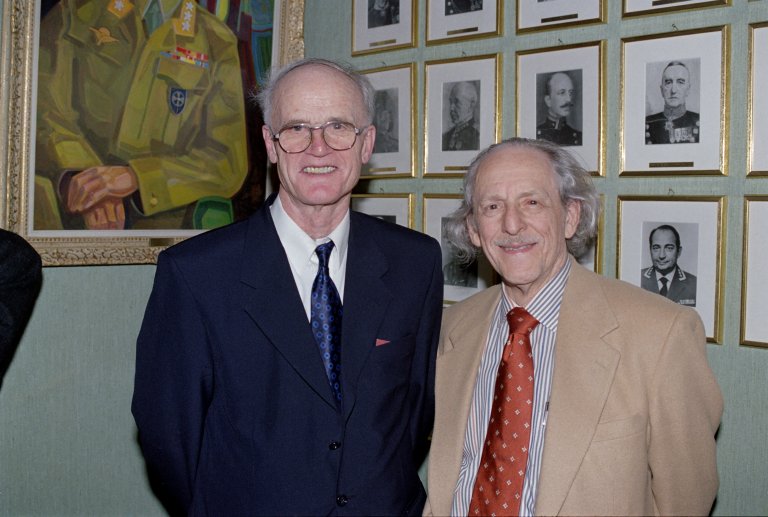
In addition to the fact that ‘Bøyum’s method’ made him Norway’s most cited researcher, his research resulted in five other ‘citation classics’ that many became familiar with round the world.
Norwegian researchers participating in international congresses have often experienced someone approaching them and asking: “Are you Norwegian? Do you know Dr Bøyum?”
Colleague Per Kristian Opstad explains:
“Arne did not take himself very seriously. He would often arrive at the congress hall with his shirt untucked. Once, when he was invited to speak at a congress in Moscow, he entered and found a seat. The Russian next to him extended his hand to greet him. When Arne introduced himself, the Russian stood up, bowed and said: ‘Oh Jesus, I am honoured to sit beside you’”.
Bøyum’s wealth
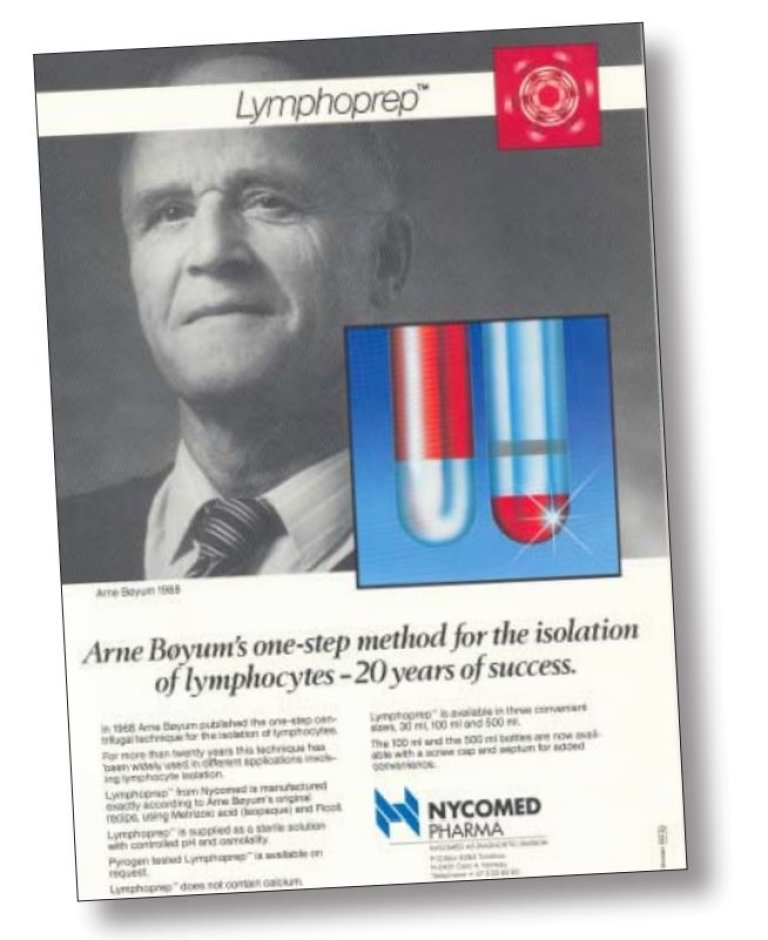
Was there any basis for the question “He must be very rich”?
The method did not make Bøyum rich in financial terms. That said, he was paid consulting fees from Nycomed for a few years. The company also used him in advertisements for the separation liquid that had formed the basis for the method and which had now become a major sale item.
However, his fees probably could not compare with the hundreds of thousands of litres of liquid the company could produce and sell each year.
The success can be measured in a different way. To the extent that one wants one's work to be impactful, there is no doubt: Arne Bøyum’s method garnered more attention than most researchers could dream of.